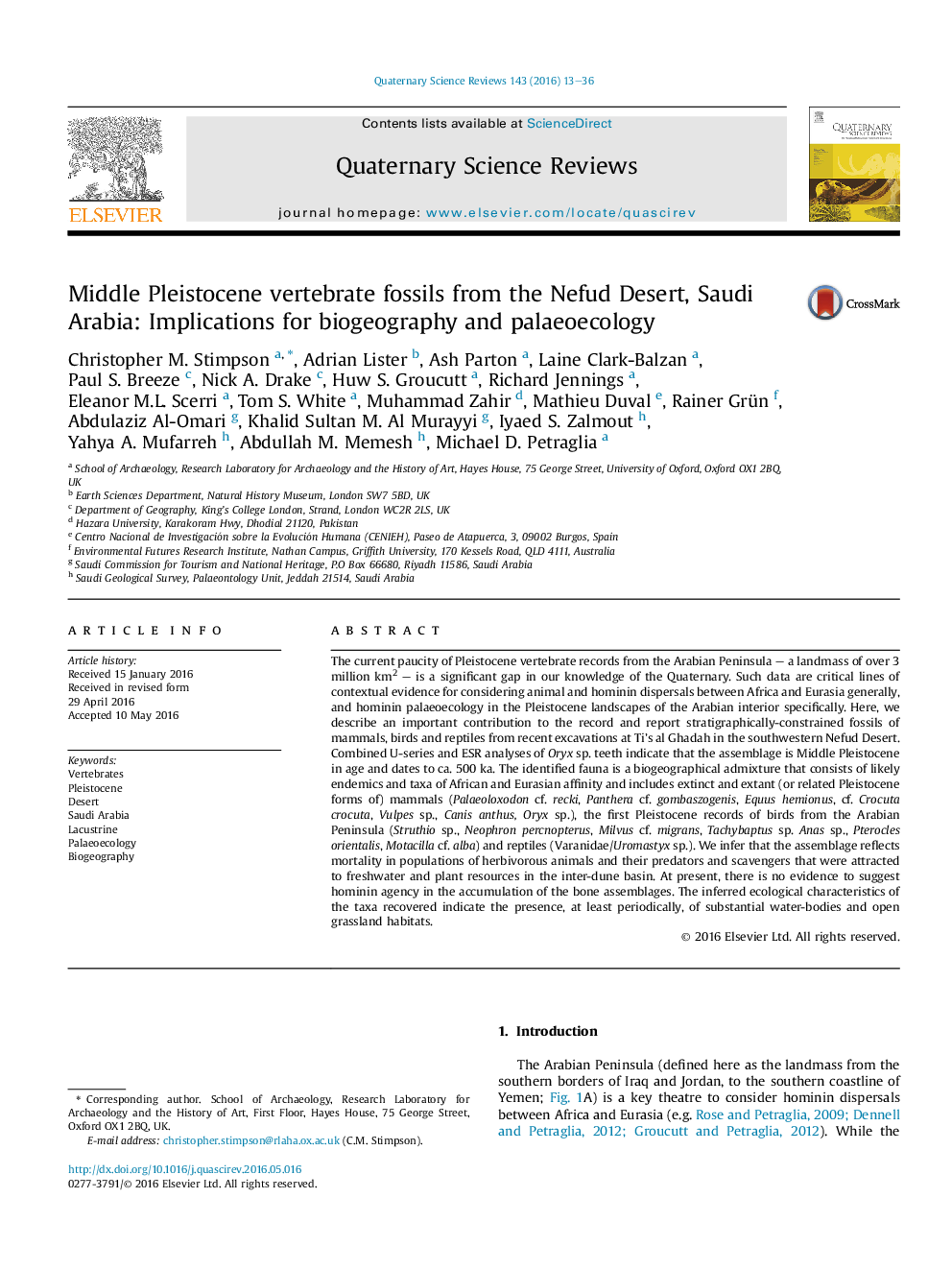| Article ID | Journal | Published Year | Pages | File Type |
|---|---|---|---|---|
| 6446055 | Quaternary Science Reviews | 2016 | 24 Pages |
Abstract
The current paucity of Pleistocene vertebrate records from the Arabian Peninsula - a landmass of over 3 million km2 - is a significant gap in our knowledge of the Quaternary. Such data are critical lines of contextual evidence for considering animal and hominin dispersals between Africa and Eurasia generally, and hominin palaeoecology in the Pleistocene landscapes of the Arabian interior specifically. Here, we describe an important contribution to the record and report stratigraphically-constrained fossils of mammals, birds and reptiles from recent excavations at Ti's al Ghadah in the southwestern Nefud Desert. Combined U-series and ESR analyses of Oryx sp. teeth indicate that the assemblage is Middle Pleistocene in age and dates to ca. 500Â ka. The identified fauna is a biogeographical admixture that consists of likely endemics and taxa of African and Eurasian affinity and includes extinct and extant (or related Pleistocene forms of) mammals (Palaeoloxodon cf. recki, Panthera cf. gombaszogenis, Equus hemionus, cf. Crocuta crocuta, Vulpes sp., Canis anthus, Oryx sp.), the first Pleistocene records of birds from the Arabian Peninsula (Struthio sp., Neophron percnopterus, Milvus cf. migrans, Tachybaptus sp. Anas sp., Pterocles orientalis, Motacilla cf. alba) and reptiles (Varanidae/Uromastyx sp.). We infer that the assemblage reflects mortality in populations of herbivorous animals and their predators and scavengers that were attracted to freshwater and plant resources in the inter-dune basin. At present, there is no evidence to suggest hominin agency in the accumulation of the bone assemblages. The inferred ecological characteristics of the taxa recovered indicate the presence, at least periodically, of substantial water-bodies and open grassland habitats.
Related Topics
Physical Sciences and Engineering
Earth and Planetary Sciences
Geology
Authors
Christopher M. Stimpson, Adrian Lister, Ash Parton, Laine Clark-Balzan, Paul S. Breeze, Nick A. Drake, Huw S. Groucutt, Richard Jennings, Eleanor M.L. Scerri, Tom S. White, Muhammad Zahir, Mathieu Duval, Rainer Grün, Abdulaziz Al-Omari,
